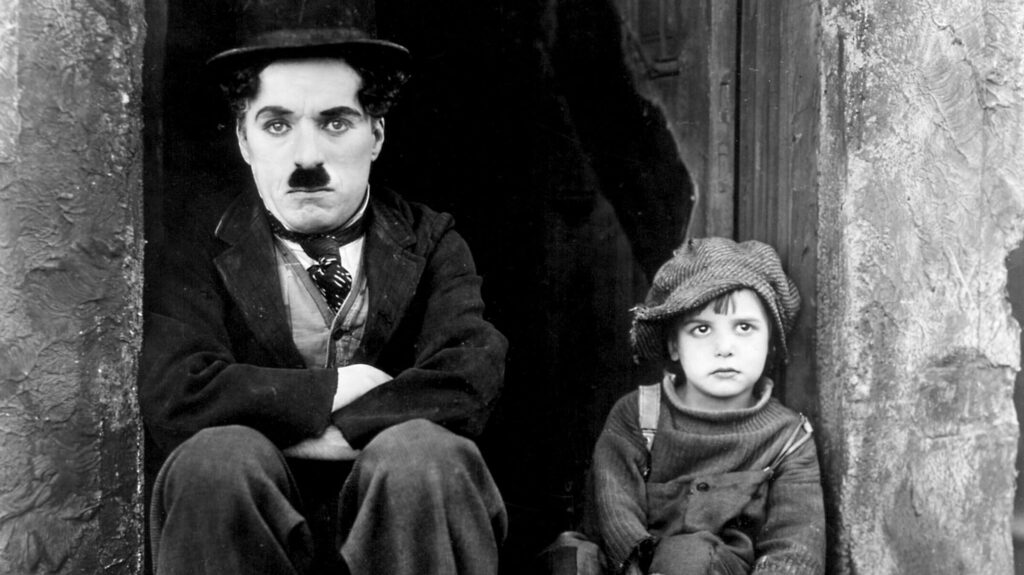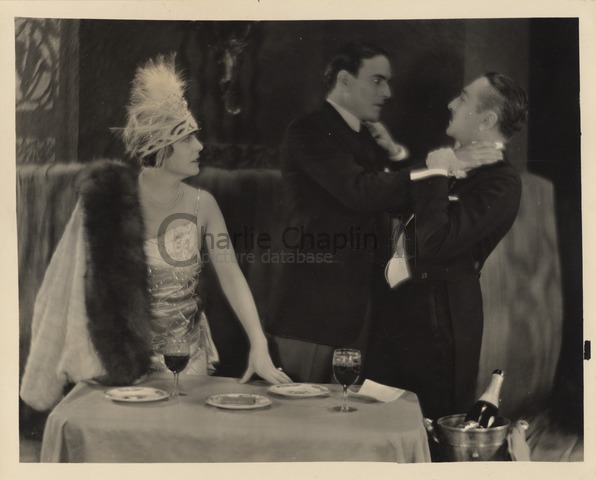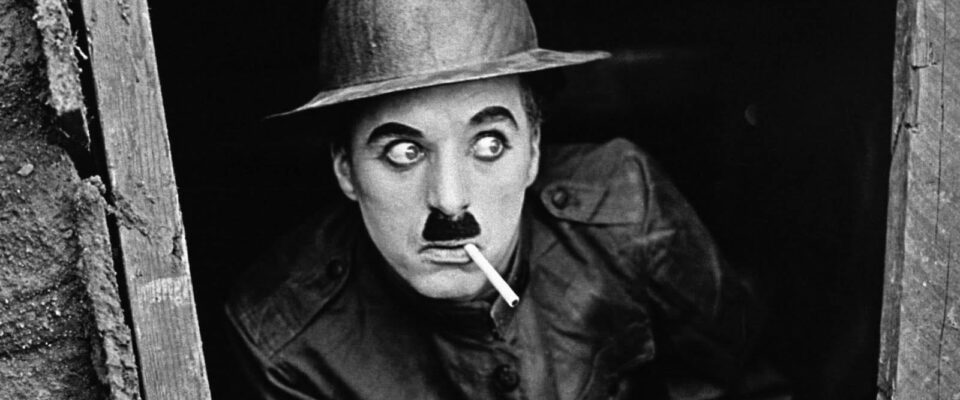Overview
Charlie Chaplin was a popular actor, comedian and filmmaker during the 20th century. His comedic genius was recognized worldwide as by the 1920s Chaplin had become an incredible success both in the United States and abroad. Chaplin’s films often commented on the insanity of every day life and he brought attention to the various class struggles many faced during the decade. Today, Chaplin is considered one of the most influential figures in the film industry.
Early Life
Charles Spencer Chaplin was born in London, England, on April 16th, 1889. Both of Chaplin’s parents were prominent stage actors in the U.K, introducing Chaplin to stage art at the young age of five. During his childhood Chaplin and his brother Sydney faced the loss of their mother and father, forcing the two kids into entering an orphanage in London. Chaplin had always had a difficult relationship with his father and therefore was drawn to his mother’s caring and composed manner. Yet when his mother fell ill after his fathers death, Chaplin was plagued with guilt and feelings of isolation.
It is not surprising that Chaplin’s troubled childhood resulted in an increased desire to express himself on stage. Chaplin has been cited describing comedy as an art which “prevents one from being overwhelmed and driven to the point of insanity by the seriousness of life.”
Due to his exposure to the stage and inheriting his parents admiration for performance art, Chaplin joined a youth company in England called the Eight Lancashire Lads where he performed as a tap dancer. In 1908 Chaplin joined the Fred Karno Repertoire Company which prompted his move to the United States in 1910.
Coming to America
Chaplin toured with the Karno Company for a few years before eventually receiving a motion picture contract in November of 1913 where he would agree to appear in Canadian-American director Mack Sennett’s Keystone comedy films. In the United States Chaplin gained massive popularity through his Keystone performances and it was while creating films for Sennett that Chaplin developed his iconic style and character the Tramp, which would propel him to much greater success in the coming years.
The character of The Little Tramp that was created through his work in the U.S. was a man who dressed in a haggard suit, carrying a cane and often wearing a top hat. The Tramp was clumsy and awkward in these situations, making him endearing and relatable. Chaplin is considered an expert at creating comedy in difficult or brief situations. Especially during a period of silent film, Chaplin relied on physical comedy and facial expressions to find the humor within scenes.

After a year at Keystone Chaplin left the company to pursue a contract with Essanay Film Manufacturing in 1915 where he would receive an increase in pay of around $900, around $20,000 by 2021 standards. However, by 1916 Chaplin had signed to Mutual Film Corporation for an even greater salary. Chaplin had made a name for himself in the American film industry as one of the most sought after comedic actors of the beginning of the 20th century.
Upon completion of his contract with Mutual Films, Chaplin had begun ruminating on the idea of starting his own production company. The United States involvement in World War I studented his project slightly, as in 1918 entered into an agreement with First National Exhibitors’ Circuit. The organization encouraged Chaplin to travel around the U.S. to sell war bonds and generate public support for the war after his film production had completed. Chaplin’s emergence and understanding of American society and its population would allow him to create films in the following decade that would capture both the industrial landscape of the country and the experiences of working class immigrants.
Independence in Film
Chaplin was eager to begin construction of his new studio located in Hollywood, California. After over two decades working in the film industry he wished to gain the freedom to create his own projects. In 1919 Chaplin, along with other prominent figures in the industry such as Mary Pickford, Douglas Fairbanks and D.W. Griffith created the United Artists Cooperation. The majority of Chaplin’s films throughout the 1920s would be made through United Artists.
Notable Works of the 1920s
Chaplin’s first prominent work of the decade was his film The Kid, which was released in 1921. The silent film showcased his popular character the Tramp as a man who rescues a baby that had been abandoned by an unwed mother and raises him for a number of years. The film had its premiere at New York City’s Carnegie Hall and received immense support from critics who praised Chaplin for his direction and comedic capabilities. The film itself was one of the first in his career where Chaplin began to address the issue of poverty and class dynamics in society. The film highlights the realities unmarried women who must bear children alone face, along with questions about what it means to “properly” raise a child within a certain standard of living.

In 1923 Chaplin released A Woman in Paris, a film which signaled a shift in Chaplin’s previous endeavors. The film itself was a romantic drama, and Chaplin himself played a very small role amidst the two main actors. A Woman in Paris showcased a more serious side of Chaplin and proved his abilities as a capable filmmaker.
Despite all his notable work during the 1920s, Chaplin’s 1925 film The Gold Rush, offered a nuanced perspective on Western expansion and American poverty during a period of advertised affluence. Although many of Chaplin’s films offer some social commentary, The Gold Rush sees Chaplin’s Tramp character seeking gold in the wild American plains, resorting to poverty and starvation as a result of his idealized quest for wealth. A famous scene from the film depicts Chaplin eating his own rubber shoe for a meal as a comedic take on the realities of food insecurity in the United States.
The work released by Chaplin during the 1920s was often reflective of many of the social and economic issues that were present amongst lower and middle class Americans. While Chaplin’s films were a manner with which the public could escape reality and be entertained, the messages explored through his character the Tramp highlighted poverty, injustice and urban decay.
In 1928 Chaplin’s The Circus was released after months of turbulent filming conditions. The film was rated highly by critics and even earned Chaplin his first Academy Award. The actors worked alongside live animals, performed their own stunts aimed to create the environment of a circus on set. Along with acting in the film, Chaplin worked behind the scenes to produce the music score for the film as song choice was especially important in silent movies during this time. Chaplin chose music popular during the 1920s to play against his work in the hopes that it would allow the audience to better understand the characters emotions and actions.

Significance During The 1920s
Charlie Chaplin was an integral figure during the 1920s through his films, stage presence, impact on the film industry and commentary on various social issues. During the 1920s Chaplin started his own production company and released some of his most memorable works such as The Kid, A Woman in Paris, The Gold Rush and The Circus. Although the 1920s is often remembered as an affluent time in American history, Chaplin’s films are a reminder of the kinds of conditions working class and immigrant families faced. Audiences were able to be entertained in theaters, while also being exposed to poverty out West or the difficult life of a child on the streets.
Chaplin set a new standard in the 1920s for what comedy and film were capable of. His films challenged conventional Hollywood narratives and introduced a new era of filmmaking.
Timeline of Chaplin’s Life Throughout The 1920s
https://www.sutori.com/story/charlie-chaplin–NBwXvUjfBqEzFqTcDgZRJ5S5/embed
Citations:
https://www.history.com/this-day-in-history/charlie-chaplin-born
https://www.britannica.com/biography/Charlie-Chaplin
https://www.britannica.com/topic/The-Kid-film-1921
https://www.charliechaplin.com/en/articles/21-Overview-of-His-Life
https://www.pbs.org/wgbh/americanexperience/features/pickford-charlie-chaplin-1889-1977/
Korte, Barbara. “New World Poor through an Old World Lens: Charlie Chaplin’s Engagement with Poverty.” Amerikastudien / American Studies 55, no. 1 (2010): 123-41.https://www.jstor.org/stable/41158484.
Kuriyama, Constance Brown. “Chaplin’s Impure Comedy: The Art of Survival.” Film Quarterly 45, no. 3 (1992): 26-38.https://www.jstor.org/stable/1213221.
Vance, Jeffrey. “”The Circus”: A Chaplin Masterpiece.” Film History 8, no. 2 (1996): 186-208. https://www.jstor.org/stable/3815334.
Senior History and American Studies student at Ramapo College of New Jersey enrolled in Discovering Digital History course taught by Dr. Hajo during Spring 2021.

